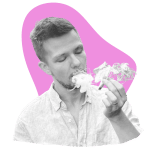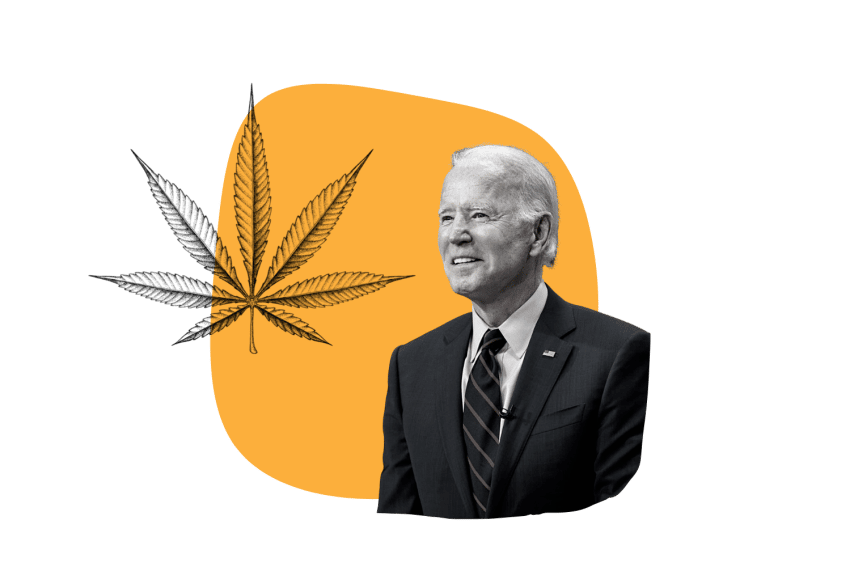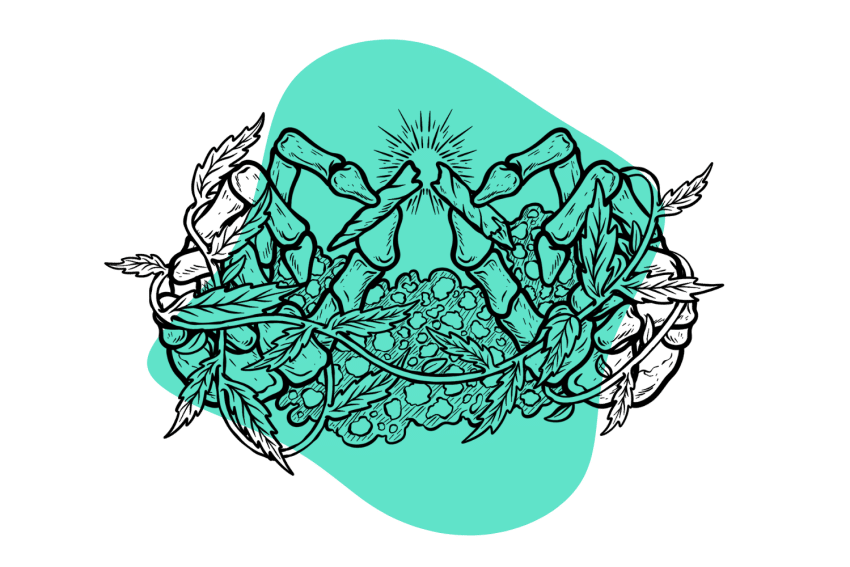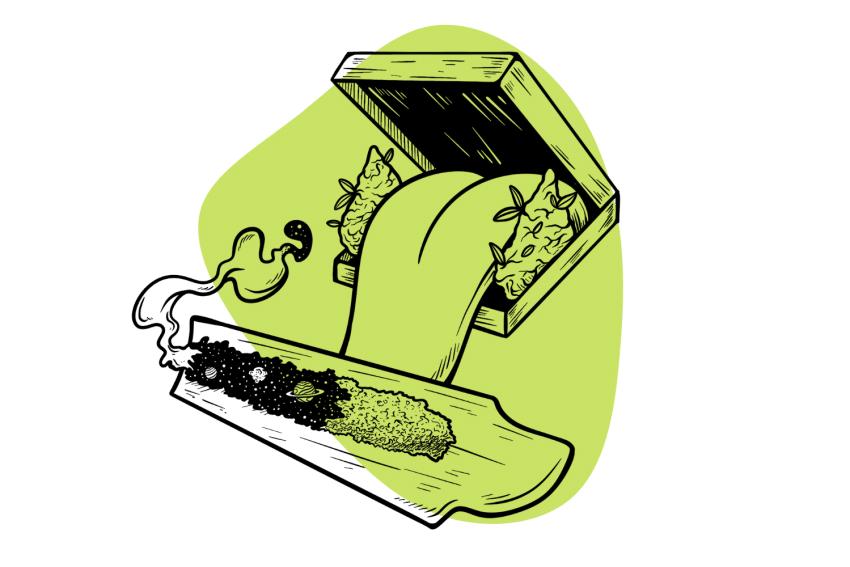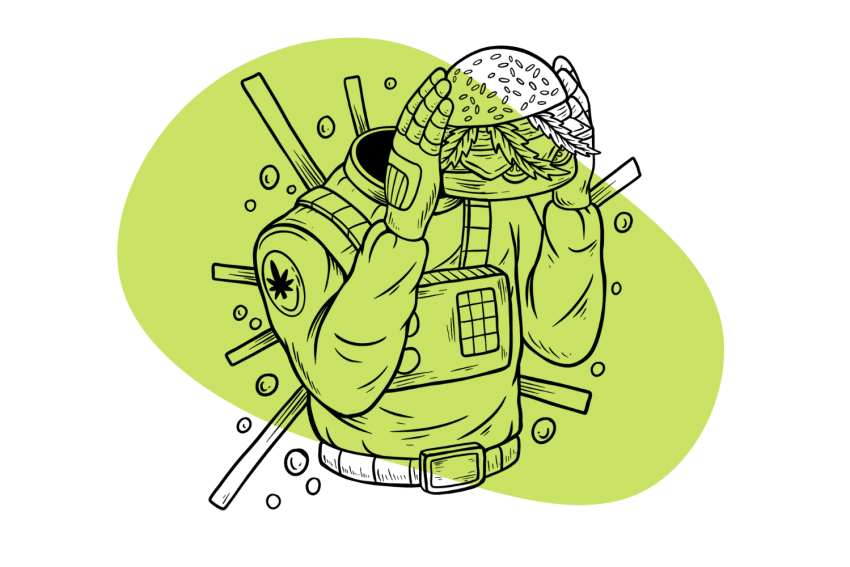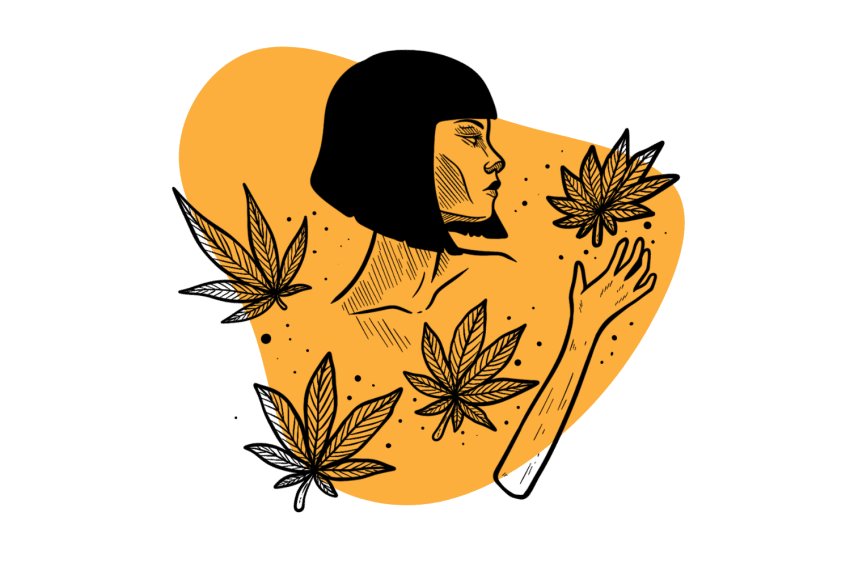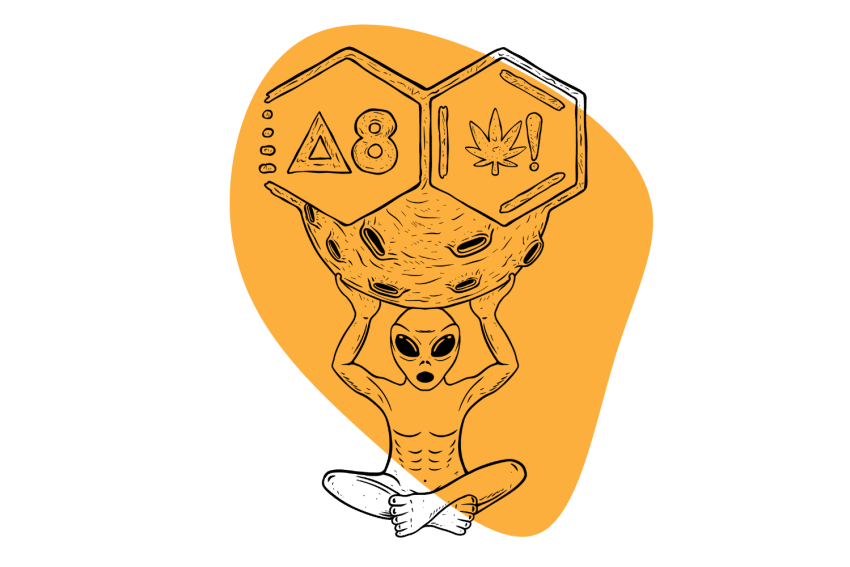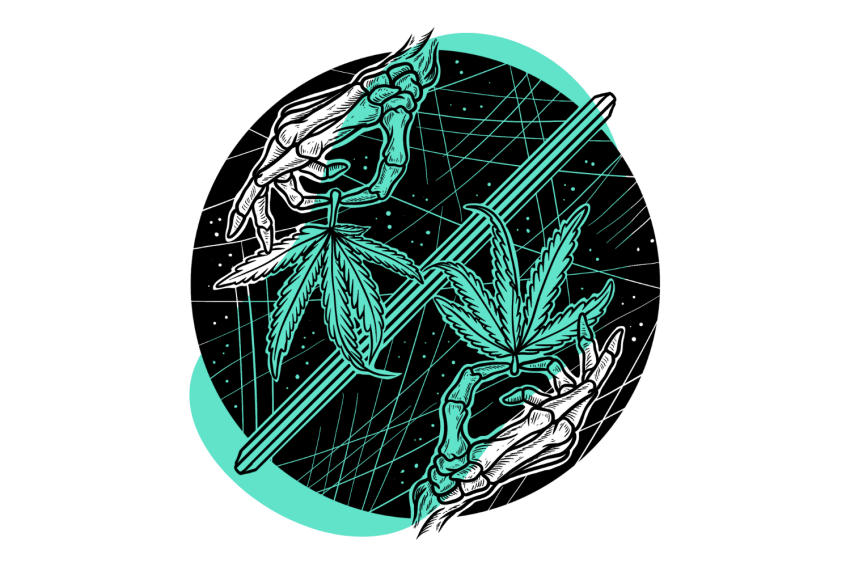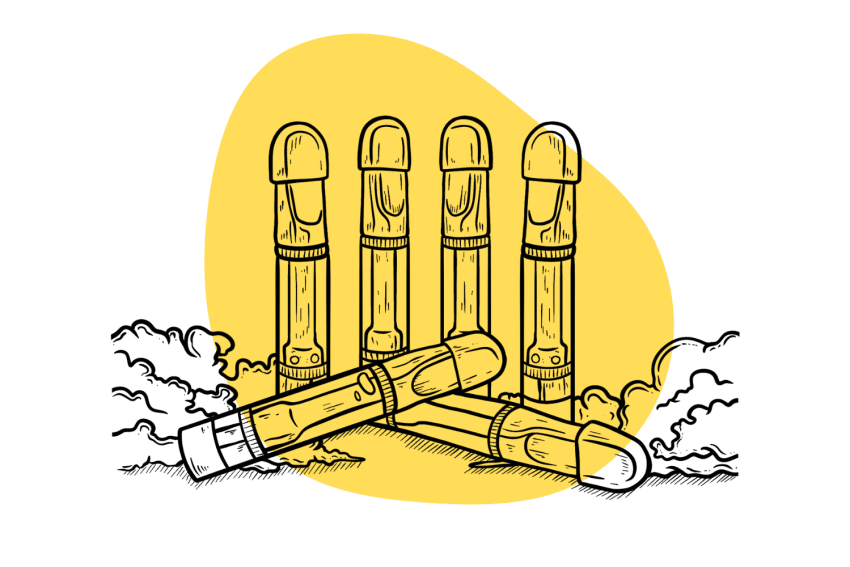Is Weed a Stimulant or Depressant? The Magic Behind Its Effects
The same traits that make weed an effective medicine are the same things that make it energizing 🏃or sedating 🥱
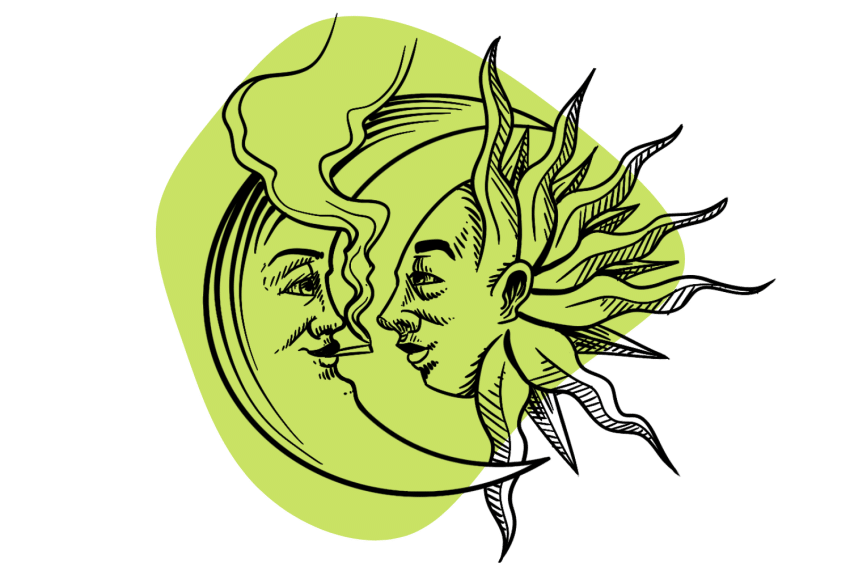
Drugs have different properties and effects, based on which they’re assigned to different groups like stimulants, depressants, or hallucinogens.
Much as we’d like, we can’t assign weed, or marijuana, to any of these categories.
Neuroscientists argue that weed can be a stimulant or depressant, depending on several factors discussed in this article.
Is Weed a Stimulant or Depressant?
Weed can be classified as a stimulant, depressant, or hallucinogen [1].
However, it doesn’t fall into the opiates category.
Let’s explore how marijuana affects the nervous system.
Weed As a Stimulant
The effects of stimulants are on the opposite side of depressants and are, well, stimulating. But it goes deeper than that.
Some people classify weed as a stimulant because it can cause the following effects, typical of stimulants [2]:
- Anxiety
- Elevated mood
- Energy
- Euphoria
- Increased motivation and focus
- Paranoia (high doses)
- Racing or irregular heartbeat (also high doses)
As a stimulant, weed also carries a risk of psychological dependency — mostly with overuse.

Weed As a Depressant
Depressants affect your nervous system by slowing down brain function, relaxing tense muscles, and calming nerves. Depressants can be helpful in several conditions, including muscle spasms, anxiety, or insomnia.
Wed has similar positive and negative effects to depressants, such as [3]:
- Calming
- Dizziness
- Muscle relaxation
- Sleepiness
- Selective short-term memory
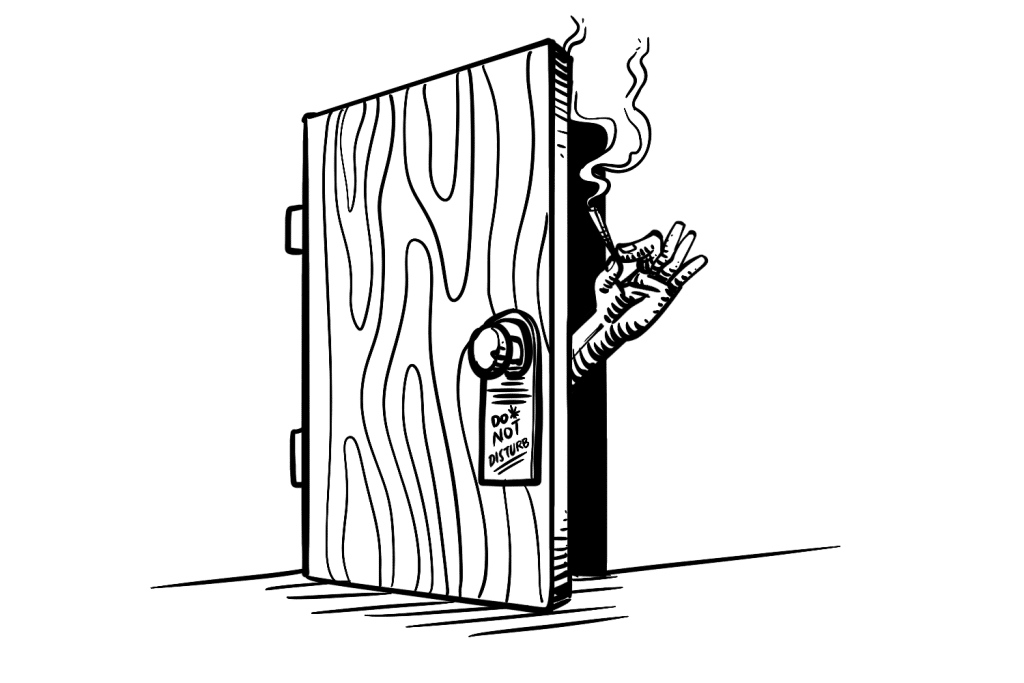
Depressants are generally less addictive than stimulants. However, some of them (e.g., barbiturates) carry a higher potential for abuse. You can also develop a tolerance to depressants, meaning you won’t feel the same effects unless you increase the dosage.
You can also get psychologically addicted to weed. If you use it for sleep, you may have problems falling asleep without it.
Weed As a Hallucinogen
Although weed isn’t a hallucinogen by definition, it can have some mild hallucinogenic effects, particularly if you consume large doses.
Overdosing on weed may involve intense visual experiences on the verge of hallucinations, but they’re nowhere near the trip on a high dose of psychedelic mushrooms or LSD.
How Does Cannabis Act As a Stimulant & a Depressant?
Cannabis has complex effects on the brain and central nervous system. Let’s take a deeper dive into the endocannabinoid system to understand the “why” behind these actions.
The endocannabinoid system (ECS) is the largest network of neurotransmitters and receptors in all mammals.
It regulates essential biological processes in the body, working to maintain homeostasis (balance) between other systems and organs [4].
There are two types of cannabinoid receptors:
- CB1: they’re mostly found in the brain and central nervous system
- CB2: they occur in the immune and peripheral nervous system
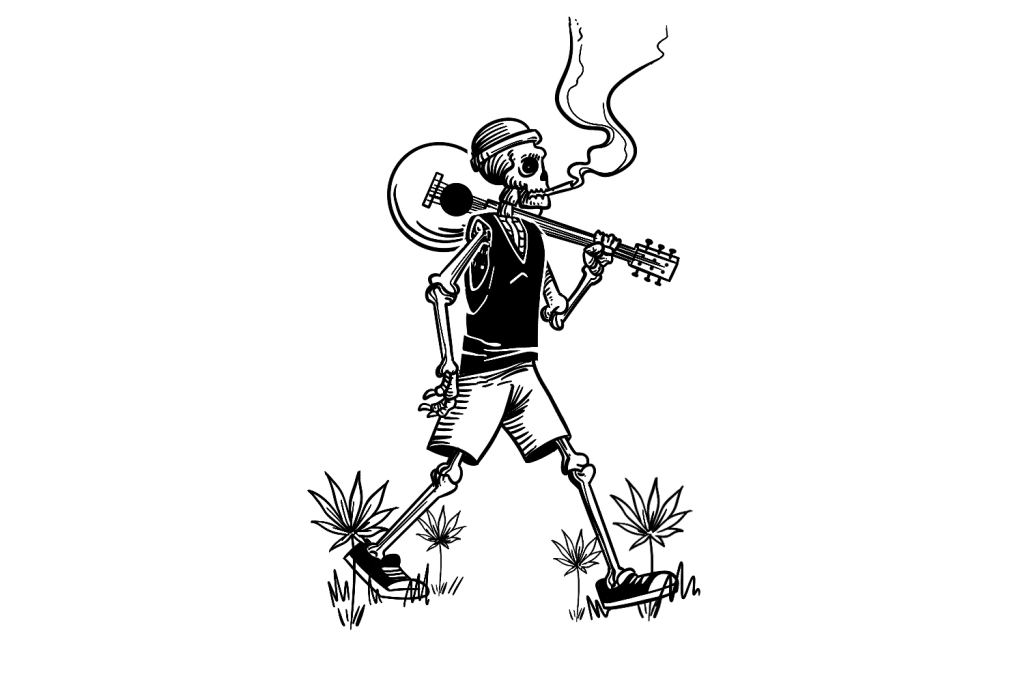
The CB1 receptor regulates memory and learning, pain sensation, appetite, metabolism, mood, and anxiety.
The CB2 receptor regulates inflammation, immune responses, metabolism, and cells and their life cycles.
The ECS produces endocannabinoids — neurotransmitters that bind to the said receptors and work their “magic” throughout the body.
Cannabis’ Effects On the ECS
Whether weed will act as a stimulant or depressant depends on how receptors in the brain are stimulated.
As mentioned above, the ECS always strives to achieve homeostasis in the body, and its role is to maintain it once it succeeds.
Whenever there’s a disruption in your endocannabinoid levels, the ECS will work to fix them. These disruptions may cause the system to become underactive or hyperactive [5].
1. Tetrahydrocannabinol (THC)
To give you a better explanation, let’s peek at how THC and CBD interact with the nervous system.
THC activates the CB1 receptor, so it has a more direct impact on neuronal communication. It modulates the activity of dopamine, serotonin, and GABA.
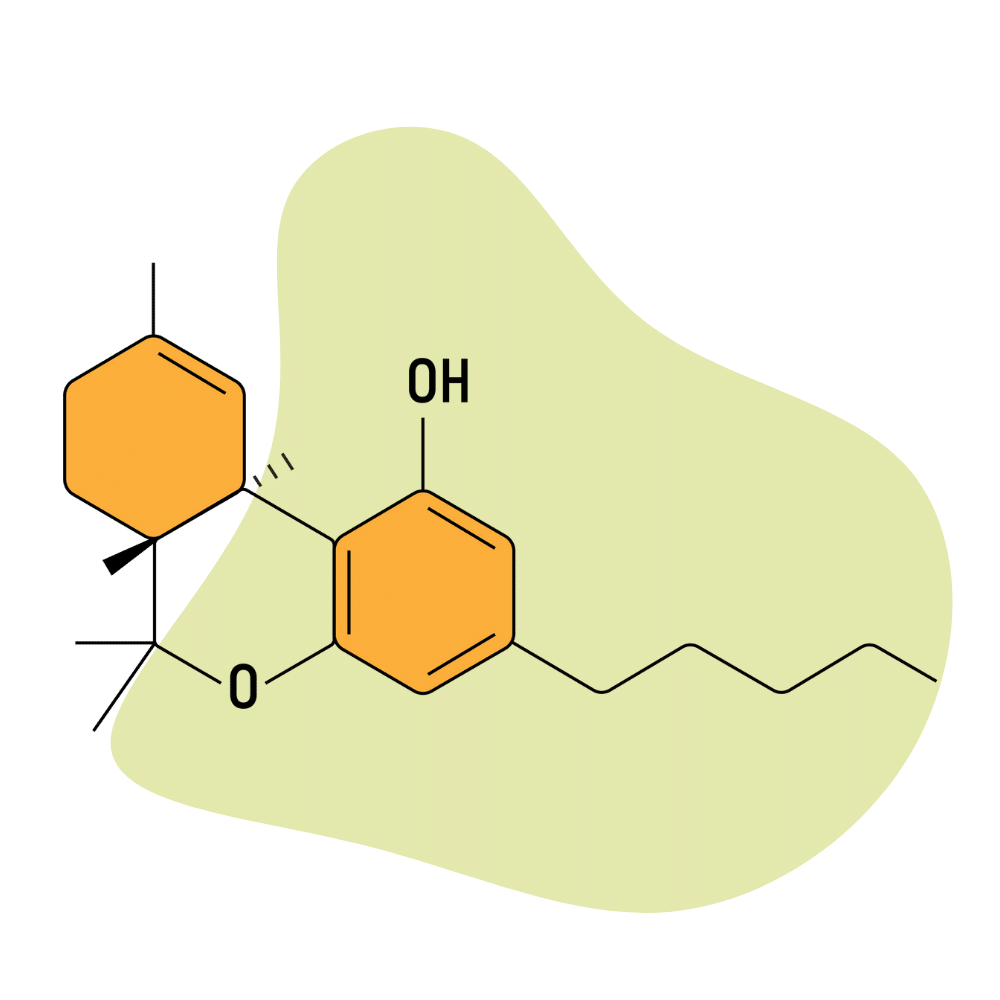
Anandamide is the major endocannabinoid affecting the brain and central nervous system and is nicknamed “the bliss molecule.” THC has an almost identical molecular structure, so when you smoke weed, you fool your brain into thinking there’s more of it.
This mostly relaxes your nervous system, causing a depressant and euphoric effect – this is enhanced when you smoke a strong indica strain [6].
Taking too high a dose can trigger the opposite reaction; you may feel high, sleepy, hungry, and free from physical discomfort.
Interestingly, people who have a rare genetic mutation have unusually elevated levels of anandamide; they’re naturally happier, more resistant to pain, and remain calm even during stressful situations. Such users can’t get high on weed and usually need to concentrate on feeling the psychoactive buzz [7].
2. Cannabidiol (CBD)
CBD balances your natural levels of anandamide, so it almost always has a stimulating effect, especially if used in “supplemental” doses [8]. Larger amounts can sedate you and trigger a depressant effect, but that mostly happens over 100 mg per serving.
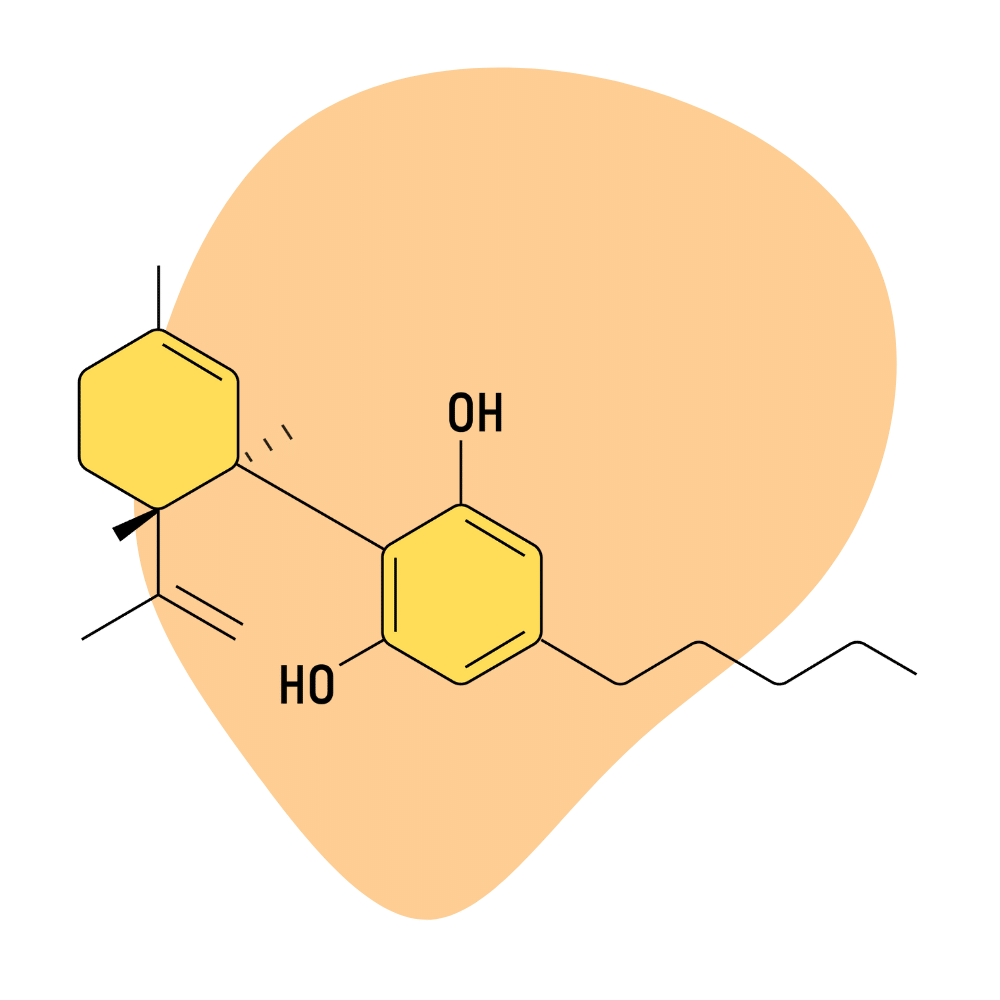
Low levels of anandamide are associated with lethargy, anxiety, lack of motivation, decreased pain threshold, and depression — among many others.
That’s why you feel happy, motivated, calm, and focused after the right dose.
CBD is more subtle because it signals the ECS to produce more endocannabinoids. This enhances your receptors’ natural capacity, allowing them to use neurotransmitters more efficiently.
3. Terpenes & Other Compounds
Beyond THC and CBD, some other cannabinoids and compounds change the effects. The type of cannabis may cause the effects to lean more toward stimulating or relaxing.
There are three types of cannabis strains:
- Sativa: These tall plants with long, fluffy buds are native to tropical countries and characterized by citrusy, piney, and fruity aromas from their terpene profiles.
- Indica: These short, bushy plants have compact, dense buds; they’re native to the Asian continent and known for their complex terpene profiles redolent of fruits, earth, hops, and musk.
- Hybrid: Such plants contain different ratios between indica and sativa. Rather than judging their effects by genetics alone, use their terpenes to determine whether your weed will act more like a stimulant or depressant.
Terpenes are aromatic molecules that provide plants with their distinctive fragrances. Cannabis is a particularly aromatic plant with high concentrations of terpenes.
These essential oils also take part in the entourage effect. When combined with THC, CBD, and other cannabinoids, they create a unique synergy known as the entourage effect — the sum of all cannabis compounds offers greater therapeutic potential than each one alone.
Terpenes help decide whether your weed strain will act as a stimulant or depressant.
Citrusy, piney, and tropical aromas will give you cerebral effects redolent of stimulants.
But when you smoke skunky weed that smells like damp earth, diesel, and sweet fruits, you can expect effects similar to depressants — especially in high doses.
Other Factors To Consider
Terpenes and cannabinoids aside, your weed can have both stimulant and depressant effects, depending on individual factors, such as dosage, consumption method, and personal differences in sensitivity to THC.
1. Low vs. High Dose
Most people enjoy the buzz from cannabis. Low and threshold doses are well-tolerated, but certain individuals are susceptible to the psychedelic effects of THC. Such users may experience the biphasic effect of cannabis. Higher doses instill anxiety, paranoia, and increased heart rate for them.
Always consume cannabis in a safe environment, surrounded by people you feel safe around — and with no hidden emotions or fears at the time of consumption.
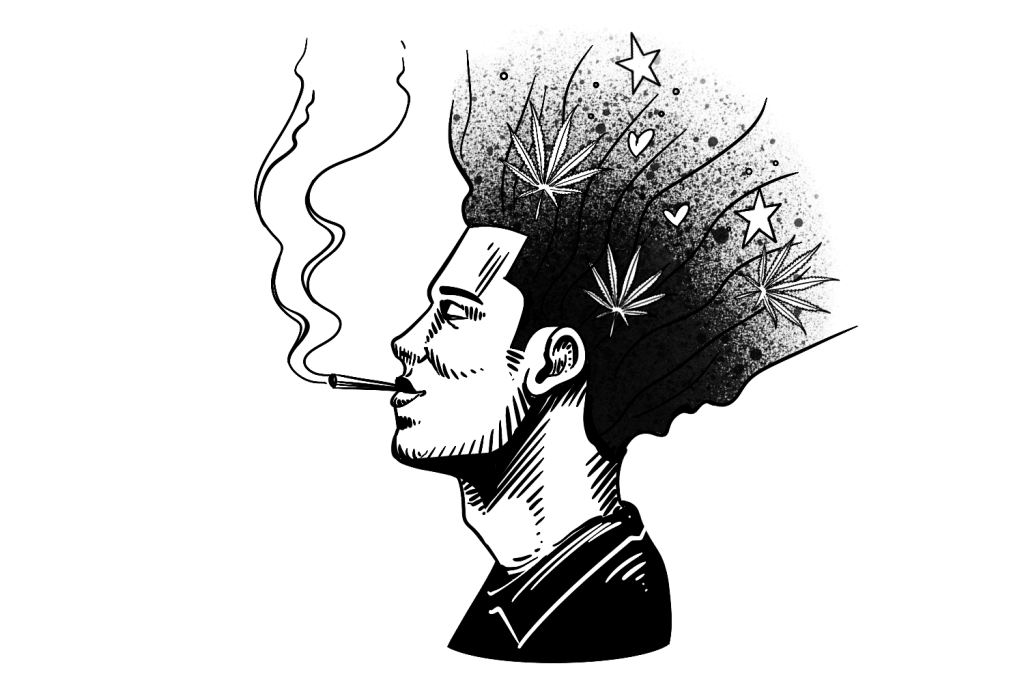
Low doses of THC can increase alertness, focus, and productivity. That’s why some people microdose marijuana to get better results.
What’s considered a high or low dose depends on individual factors such as tolerance, weight, and consumption method.
Because of that, there are no universal figures for low and high doses of THC. Everybody’s different, and what one person considers a high dose may be a threshold or microdose for another.
However, first-time users and occasional smokers can use the following ranges:
- Microdosing — 2.5-5 mg THC
- Low dose — 5-10 mg
- Threshold dose —10-15 mg
- Moderate dose —15-30 mg
- High dose — 30-50 mg
- Very high dose — more than 50 mg
If you want to use weed as a stimulant, stick to the 2.5-15 mg range. For depressant effects, opt for dosages upwards of 30 mg.
2. Tolerance
Let’s put it into perspective: you’re a regular daily user, and next to you stands a lightweight toker who uses cannabis for sheer recreation.
You are not the same.
You could both take 25 mg of THC – whether by smoking or eating a pot brownie.
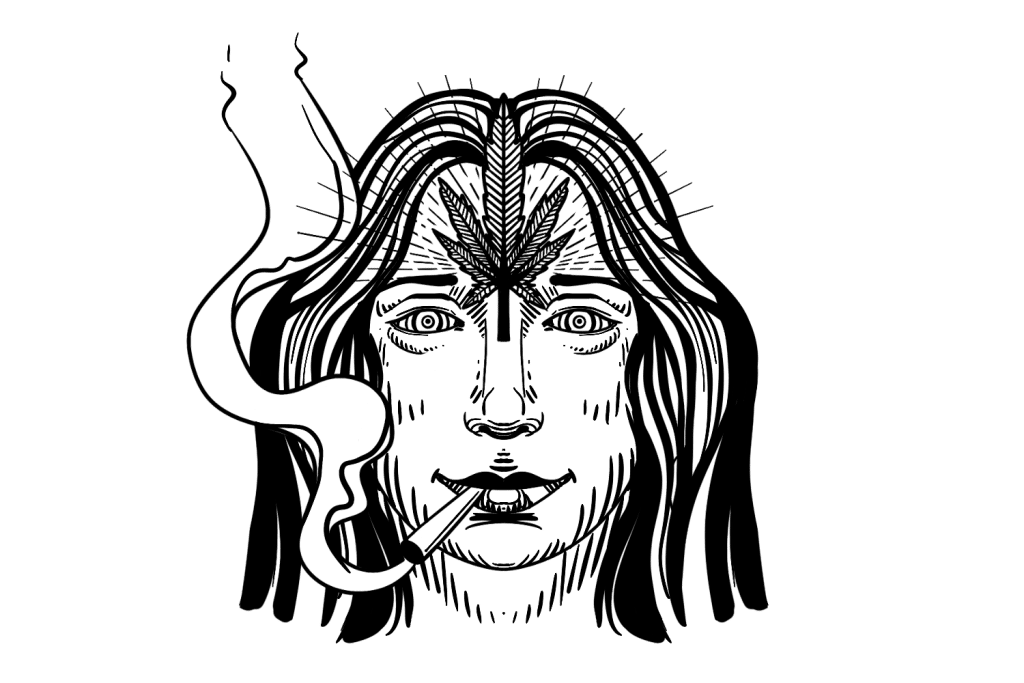
You might experience a nice buzz, probably stimulating (especially if you pick the right strain).
And the other guy might be high, sedated, hungry, euphoric, and — if the biphasic nature of THC kicks in — anxious and paranoid.
Tolerance is a neutral concept if you don’t strive to get high every time you consume weed. But it profoundly impacts whether the herb will act as a stimulant or depressant.
3. Individual Sensitivity to THC
Everyone has a different sensitivity to various substances, including THC. Some people are naturally more reactive than others.
If you don’t need much weed to get high, you may want to be careful with the dosage to prevent anxiety and paranoia.
On the other hand, some people have a naturally higher tolerance to weed and need to consume more to achieve the same psychoactive effects.
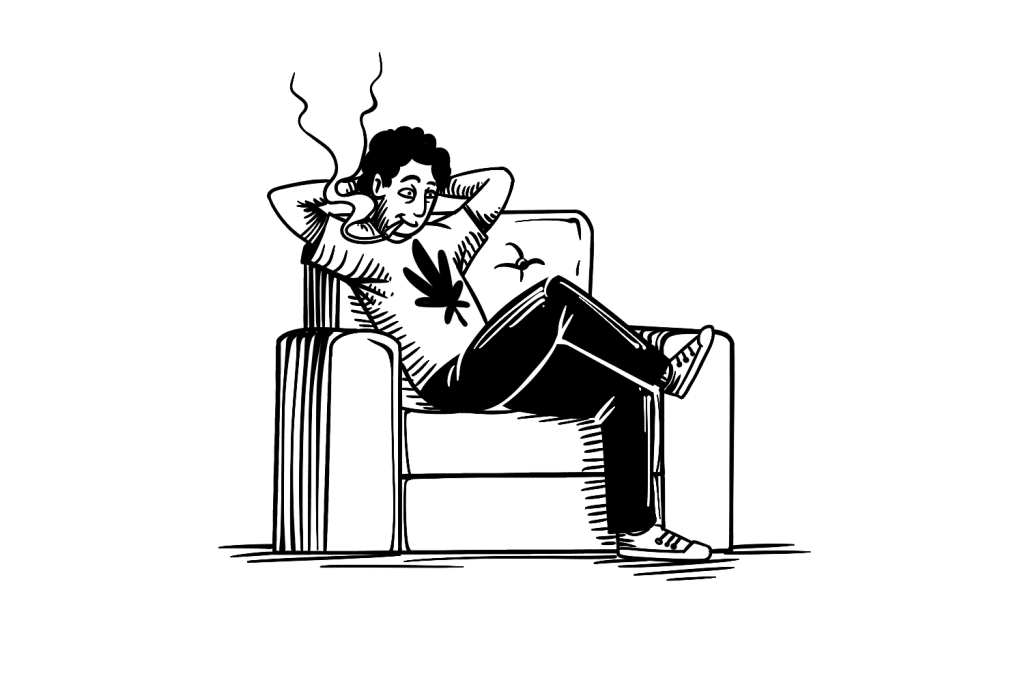
4. Setting
Aside from your personal body chemistry, your mindset and the setting you’re in are paramount to your experience.
If you smoke weed with a calm head and in a safe environment — using the right strain — you can expect more depressant effects on the nervous system.
But if you hide certain emotions or haven’t worked through your past traumas — in plain English, if there are any inconsistencies in you — THC will take them out and throw them right in your face.
These effects can be intensely stimulating, leading to feelings of mental discomfort. On the other hand, you can use this “side effect” to induce introspection and look at your thoughts from a different perspective — reaching the root of your anxiety.
References
- Murray J. B. (1986). Marijuana’s effects on human cognitive functions, psychomotor functions, and personality. The Journal of general psychology, 113(1), 23–55.
- Scherma, M., Muntoni, A. L., Riedel, G., Fratta, W., & Fadda, P. (2020). Cannabinoids and their therapeutic applications in mental disorders . Dialogues in clinical neuroscience, 22(3), 271–279.
- Hill SY, Goodwin DW, Schwin R, Powell B. Marijuana: CNS depressant of excitant? Am J Psychiatry. 1974 Mar;131(3):313-5. doi: 10.1176/ajp.131.3.313. PMID: 4812696.
- Kaur, R., Ambwani, S. R., & Singh, S. (2016). Endocannabinoid System: A Multi-Facet Therapeutic Target. Current clinical pharmacology, 11(2), 110–117.
- Russo E. B. (2008). Clinical endocannabinoid deficiency (CECD): can this concept explain therapeutic benefits of cannabis in migraine, fibromyalgia, irritable bowel syndrome and other treatment-resistant conditions?. Neuro endocrinology letters, 29(2), 192–200.
- NIDA. 2021, April 13. How does marijuana produce its effects?. Retrieved from https://nida.nih.gov/publications/research-reports/marijuana/how-does-marijuana-produce-its-effects on 2023, April 23
- Smith, D. R., Stanley, C. M., Foss, T., Boles, R. G., & McKernan, K. (2017). Rare genetic variants in the endocannabinoid system genes CNR1 and DAGLA are associated with neurological phenotypes in humans. PloS one, 12(11), e0187926.
- Deutsch D. G. (2016). A Personal Retrospective: Elevating Anandamide (AEA) by Targeting Fatty Acid Amide Hydrolase (FAAH) and the Fatty Acid Binding Proteins (FABPs). Frontiers in pharmacology, 7, 370. https://doi.org/10.3389/fphar.2016.00370
